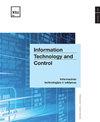Apply Physical System Model and Computer Algorithm to Identify Osmanthus Fragrans Seed Vigor Based on Hyperspectral Imaging and Convolutional Neural Network
IF 2
4区 计算机科学
Q3 AUTOMATION & CONTROL SYSTEMS
引用次数: 0
Abstract
This study explored the feasibility of using hyperspectral imaging technology and to identify Osmanthus fragrans seeds with different vigor under computer algorithm and physical system. Two varieties of Osmanthus seeds (JinQiGui and RiXiangGui) were artificially aged and then hyperspectral data were collected. Multivariate scattering correction (MSC) was used for spectral preprocessing. The selection of characteristic wavelength was realized by competitive adaptive reweighted sampling algorithm (CARS). The extreme learning machine (ELM) and k-nearest neighbor (KNN) were used to establish the spectral discriminant model, and convolutional neural network was used in the computer image discriminant model. The results show that the ability to recognize different vigor JQG was better than RXG. MSC preprocessing can not only make the data distribution more aggregated, but also effectively improve the accuracy of the model. MSC+CARS combined with discriminant model can be realized close to 100% recognition with fewer bands. Compared with machine learning model, image- depth learning model can get higher model accuracy for different vigor JQG and RXG without complex preprocessing. These results indicate that hyperspectral imaging technology can effectively distinguish different vigor of Osmanthus fragrans seeds based on computer technology and physical system, which is of great significance for future research.基于高光谱成像和卷积神经网络,应用物理系统模型和计算机算法识别桂花种子活力
本研究探讨了使用高光谱成像技术的可行性,并在计算机算法和物理系统下识别不同活力的桂花种子。对两个品种的桂花种子(金七桂和日香桂)进行人工老化,然后采集高光谱数据。采用多元散射校正(MSC)进行光谱预处理。特征波长的选择是通过竞争性自适应加权采样算法(CARS)实现的。极端学习机(ELM)和 K 最近邻(KNN)被用于建立光谱判别模型,卷积神经网络被用于计算机图像判别模型。结果表明,对不同活力的 JQG 的识别能力优于 RXG。MSC 预处理不仅能使数据分布更加聚集,还能有效提高模型的准确性。MSC+CARS 结合判别模型可以在较少波段的情况下实现接近 100%的识别率。与机器学习模型相比,图像深度学习模型可以在不进行复杂预处理的情况下对不同活力的 JQG 和 RXG 获得更高的模型精度。这些结果表明,基于计算机技术和物理系统的高光谱成像技术可以有效区分桂花种子的不同活力,对今后的研究具有重要意义。
本文章由计算机程序翻译,如有差异,请以英文原文为准。
求助全文
约1分钟内获得全文
求助全文
来源期刊

Information Technology and Control
工程技术-计算机:人工智能
CiteScore
2.70
自引率
9.10%
发文量
36
审稿时长
12 months
期刊介绍:
Periodical journal covers a wide field of computer science and control systems related problems including:
-Software and hardware engineering;
-Management systems engineering;
-Information systems and databases;
-Embedded systems;
-Physical systems modelling and application;
-Computer networks and cloud computing;
-Data visualization;
-Human-computer interface;
-Computer graphics, visual analytics, and multimedia systems.
 求助内容:
求助内容: 应助结果提醒方式:
应助结果提醒方式:


